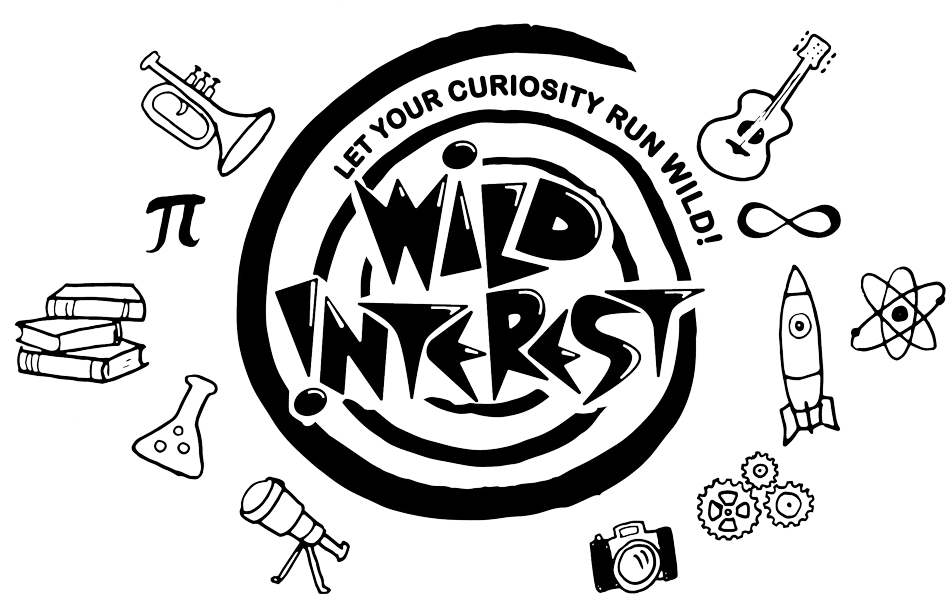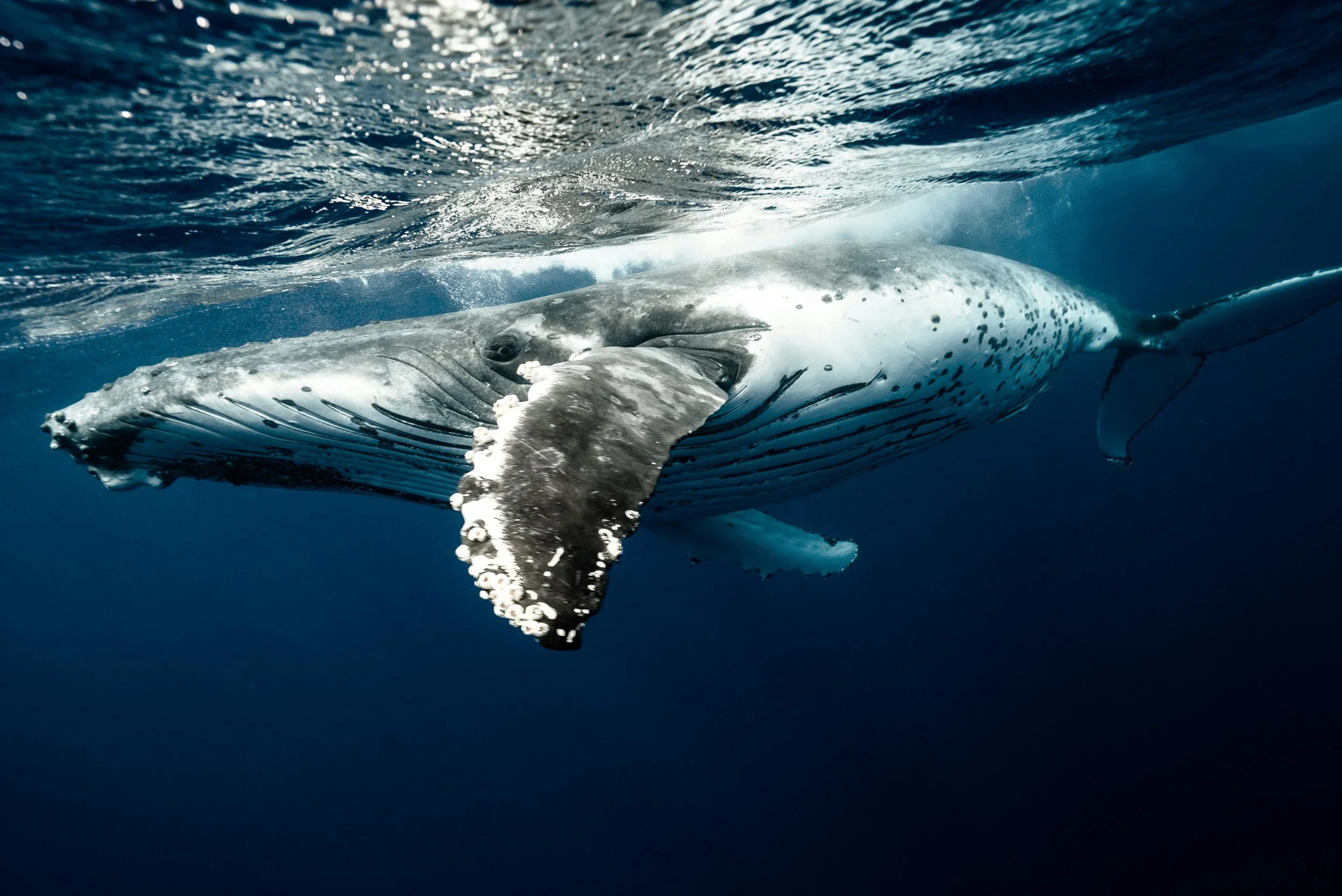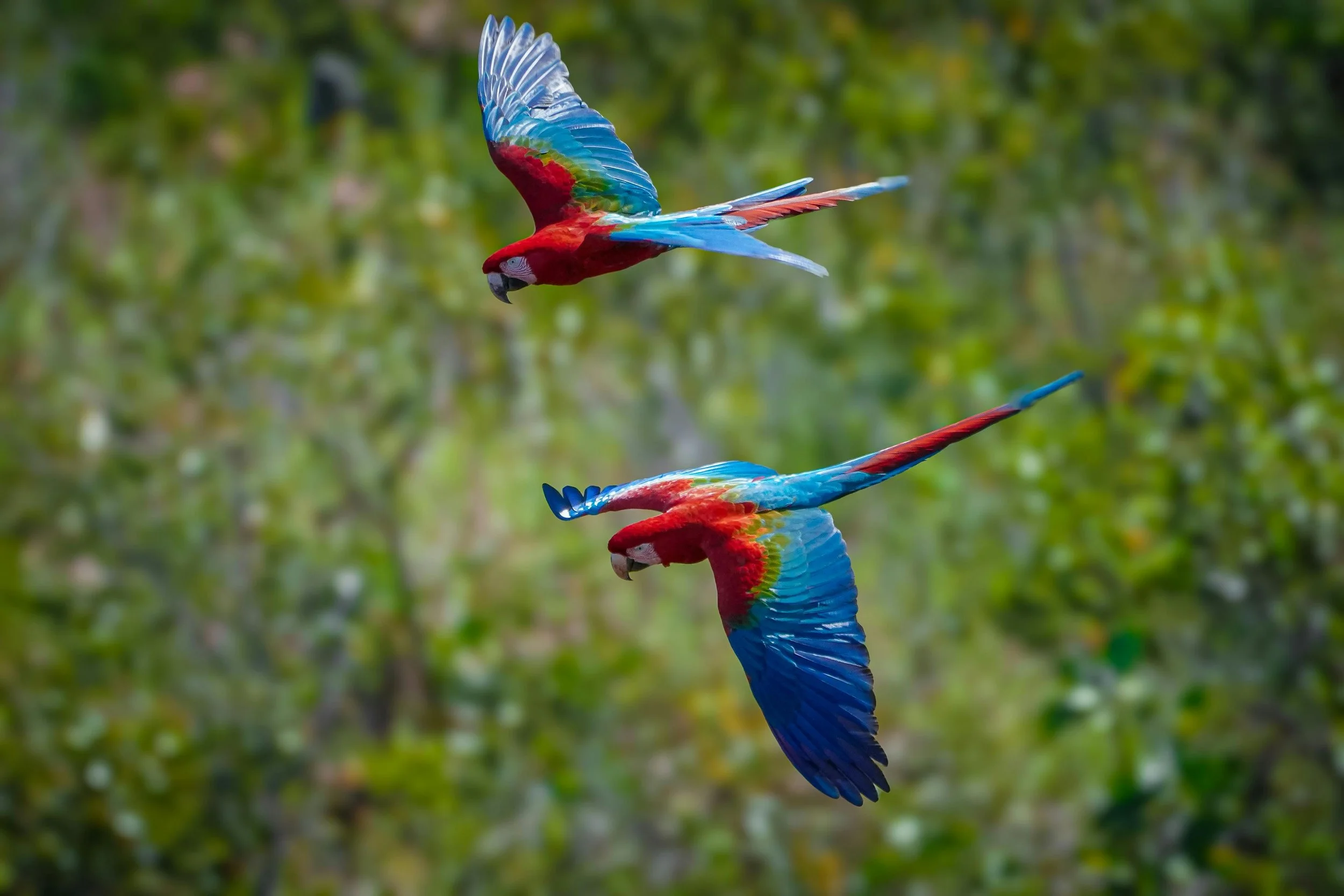Talking Animals and Listening Kids: Wild Interest Explores Animal Communication
There’s something undeniably magical about the moment a child realizes that animals talk — not in words exactly, but in ways every bit as meaningful. The bark of a dog that means “welcome home.” The low hum of a cat that means “I trust you.” The burst of chirps outside a window that seem to pass along invisible news from tree to tree.
In a world saturated with noise, listening — real, intentional listening — has become something of a lost art. And yet, for kids, listening is still how understanding begins. That’s what makes the newest episode of Wild Interest, titled “Animal Talk: Paw 2,” such a joy to experience.
Once again, hosts Nichole and Evan invite listeners on a journey through the languages of the animal kingdom — a world of squawks, clicks, songs, hoots, and gestures that tell us something profound not just about animals, but about ourselves. Following up on their first Animal Talk episode, the siblings dig even deeper this time, asking bigger questions about what it really means to communicate.
How do animals learn to share information? Can they ask questions, form concepts, or even use grammar? And perhaps most importantly — what can we, as humans and parents, learn from them about empathy and connection?
Through three unforgettable interviews — with avian cognition pioneer Dr. Irene Pepperberg, marine bio-acoustician Dr. Aude Pacini, and the compassionate team at Project Chimps — “Paw 2” opens our ears to the music of meaning in the natural world.
But beneath the science and wonder runs a deeper message: every living being has something to say, and the act of truly listening — to animals, to nature, to each other — can change how we see the world.
Deep connections are everywhere in the animal kingdom.
The Science of Connection
Before diving into the interviews, it’s worth pausing to reflect on what Wild Interest itself represents. Created entirely by kids, the podcast is built on a simple but radical premise — that curiosity, empathy, and storytelling are muscles that grow stronger when exercised through sound.
At a time when many children are bombarded by screens, Wild Interest invites them to slow down and focus on the spoken word. Listening becomes an active skill again, something that engages imagination and memory rather than passive consumption. For parents and teachers, it’s a gentle reminder of how audio can nurture deep, reflective learning.
When Nichole and Evan explore the world of animal linguistics, they’re not just teaching about parrots, dolphins, and chimps. They’re offering an auditory mirror — helping young listeners recognize that communication isn’t only about speech. It’s about perception, intention, and empathy.
That’s the hidden thread of “Animal Talk: Paw 2”: to listen to others, whether animal or human, is to understand the world a little more clearly.
Dr. Irene Pepperberg and Alex the Gray Parrot.
Dr. Irene Pepperberg and Alex the Parrot: When a Bird Asks a Question
The first stop on the episode’s journey takes us into a laboratory — though not the kind you might expect. There are no beakers bubbling or white coats shuffling papers. Instead, there’s a small grey parrot named Alex, perched with curious eyes, feathers shimmering in the light, and a voice that can ask, in perfect English, “What color am I?”
That question — “What color am I?” — would become one of the most extraordinary moments in modern animal research. It was the culmination of decades of work by Dr. Irene Pepperberg, a cognitive scientist who dared to believe that birds could think and communicate far more deeply than anyone had imagined.
In the late 1970s, when Dr. Pepperberg began her studies at Harvard and later at Boston University, the scientific consensus was that animals acted mostly on instinct. Parrots, it was thought, mimicked words without understanding. But Pepperberg suspected otherwise. She saw intelligence in their eyes — an alert, emotional awareness that went beyond mimicry.
So she began what she called the Avian Language Experiment — “ALEX” for short — and that name became the parrot’s as well.
Over the course of thirty years, Alex learned to identify colors, shapes, and numbers. He could distinguish between “same” and “different,” could count objects, and even understood the concept of zero — something human children typically master around the age of four.
But the true breakthrough wasn’t just in what Alex knew; it was in how he used language. He didn’t just repeat sounds on command. He initiated conversation. He expressed preference — asking for a “nut” instead of a “banana.” He refused when he didn’t want to cooperate. And one day, while looking into a mirror, he asked that now-famous question.
“What color?”
“You’re gray,” Pepperberg answered.
“Gray,” Alex repeated, as if confirming a truth about himself.
It was a profound moment, one that reshaped how scientists and parents alike thought about the boundary between human and animal minds.
In her interview with Evan, Dr. Pepperberg explains that language isn’t just about vocabulary — it’s about connection. For Alex, every word was part of a social exchange. He didn’t talk into a void; he talked to someone he trusted.
That trust — that bond — was the real key to his learning. And that, says Pepperberg, is something parents might recognize instantly.
“The emotional component of learning is huge,” she tells Evan. “Alex learned because he wanted to communicate. He wanted to be understood.”
For parents, this insight hits home. Children learn language in much the same way: not through rote memorization, but through relationship. A toddler says “mama” not because they’ve been drilled to repeat it, but because they’ve discovered that a sound can summon love.
Pepperberg’s work reminds us that language is an act of empathy. It begins with the realization that another being has a mind — and a heart — worth connecting with.
Today, decades after Alex’s passing, Pepperberg continues her research with new birds who are building on his legacy. They can use words to reason and even invent phrases to describe unfamiliar objects. But Alex remains singular, both for his brilliance and for the emotional truth of his story.
Before he died, his last recorded words to Pepperberg were, “You be good. I love you. See you tomorrow.”
For a bird to express affection and foresight so plainly forces us to rethink what communication really means. And for the children listening to Wild Interest, it opens a door to wonder: if a parrot can talk with us, not just at us, what else might we discover if we learn to listen more closely?
Dr. Pacini’s work helps scientists discover the language of whales.
Dr. Aude Pacini: Voices Beneath the Waves
If Alex the parrot showed us how thought can take flight, Dr. Aude Pacini reminds us that the deepest conversations on Earth happen underwater.
In “Animal Talk: Paw 2,” Nichole dives — figuratively and sonically — into the world of marine mammal communication with Dr. Pacini, a bio-acoustician with the Hawaii Institute of Marine Biology. Her work takes her far from the lab, into open ocean environments where microphones, called hydrophones, capture the symphonies of the sea.
When Dr. Pacini plays recordings of dolphin clicks and whale songs, Nichole reacts just as any listener might — with awe. The sounds seem almost extraterrestrial, pulsing with pattern and intention. But behind the mystery lies a complex science: the study of how sound functions as both navigation and language.
Whales, Pacini explains, use long, melodic sequences that can travel hundreds of miles across open water. Each population has its own dialect, like regional accents among humans. These songs can change over time, spreading through communities like musical memes.
Dolphins, by contrast, rely on bursts of clicks and whistles. Some of those sounds are used for echolocation — a kind of biological sonar — while others appear to carry social meaning.
In one study Pacini references, scientists observed dolphins using signature whistles — unique sound patterns that function like names. When one dolphin called another’s “name,” the second often responded with the same pattern, as if saying, “Yes, I’m here.”
It’s easy to imagine kids’ minds lighting up at that concept: dolphins calling each other by name! But for parents and teachers, there’s an even deeper takeaway — that the roots of language are tied to identity and belonging. To be named, and to recognize one’s name, is the start of self-awareness.
Dr. Pacini emphasizes an important distinction, though. Not all animal sound is communication. Some sounds are purely functional — echolocation, for instance, is more like a sensory tool than a sentence. But she’s careful to remind listeners that just because something isn’t human language doesn’t mean it’s not meaningful.
“Communication,” she says, “isn’t only about words. It’s about sharing space, sharing awareness.”
In one of the most poetic moments of the episode, Pacini recounts being part of an expedition where world-renowned cellist Yo-Yo Ma played his cello from the deck of a traditional Hawaiian canoe as whales swam below. The notes rippled through the water, and though the whales’ response was impossible to quantify scientifically, the feeling was unmistakable: a kind of cross-species resonance, a conversation beyond language.
This scene is an exquisite metaphor for what Wild Interest does so well — merging science and soul, data and wonder. When children hear the story of Yo-Yo Ma playing for whales, they’re not just learning about marine biology. They’re learning that empathy can travel through sound itself.
For parents, that lesson translates beautifully to human communication. The way we speak to our kids — our tone, rhythm, and presence — communicates just as much as the words we choose. Like the whales and dolphins, we’re always broadcasting meaning, often beneath the surface.
Listening to Dr. Pacini’s segment, you start to feel that maybe communication isn’t something animals do less than us, but rather something we sometimes forget how to do fully. The ocean, for all its vastness, is filled with beings that never stop listening.
Chimpanzees having a little family leisure time.
Project Chimps: Conversations in the Forest
The final chapter of “Animal Talk: Paw 2” brings listeners back to land — to the lush forests of North Georgia, where a sanctuary called Project Chimps provides a safe haven for more than ninety retired laboratory chimpanzees.
When Evan speaks with handlers Lauren and Tonya, what emerges is less a story about science and more a story about healing — about what happens when beings who have been used for research are finally allowed to live freely, form friendships, and rediscover the social worlds that define them.
Chimpanzees are our closest living relatives, sharing over 98 percent of our DNA. They use intricate combinations of gestures, facial expressions, and vocalizations to communicate. A raised eyebrow can mean curiosity. A soft panting sound can signal play. A loud pant-hoot can announce excitement to the entire troop.
But what really strikes listeners in this segment is how emotional chimp communication can be. The handlers describe moments of reunion between chimps who once lived in separate labs — the way they embrace, grooming one another for long minutes, sometimes weeping softly.
For young listeners, it’s an introduction to animal emotion that feels both familiar and profound. For parents, it’s a moment to reflect on compassion — not just as a moral value, but as a form of literacy.
When Lauren tells Evan about a chimp named Harper who loves to sit under a certain tree and chatter quietly at passing humans, it’s hard not to think of a child discovering the joy of being heard.
What makes Project Chimps extraordinary isn’t just its conservation mission, but its philosophy of care. Every interaction is built on trust. Handlers learn each chimp’s unique “vocabulary” — the sounds, gestures, and behaviors that express needs and feelings.
That kind of patient listening, Tonya explains, takes time. But it’s the same patience required in parenting or teaching. You can’t rush trust; you build it through consistent, empathetic attention.
There’s a powerful moment in the episode when Evan asks what life is like for chimps who’ve been freed from research labs. Lauren’s answer is simple and unforgettable:
“It’s like watching someone learn how to live again. The first time they touch grass. The first time they climb. The first time they laugh.”
Those small details — touch, movement, laughter — are the languages of life itself. And in a world that often measures intelligence by words, the chimps remind us that presence, joy, and connection are just as intelligent in their own way.
Parrots soaring over the jungle.
What Animals Teach Us About Listening
By the time “Animal Talk: Paw 2” ends, listeners have traveled from sky to sea to forest — from the reasoning of a parrot to the singing of whales to the quiet intimacy of chimps. But what lingers most is not any one story. It’s the thread that ties them together: the act of listening.
The genius of Wild Interest is that it models listening as a form of participation. Nichole and Evan don’t just interview their guests — they listen to them, and they react with curiosity and wonder, which invites young listeners to do the same.
For parents, this is where the educational value shines. The episode becomes more than a lesson in animal linguistics; it becomes a guide to how kids learn empathy through sound. Research in developmental psychology shows that listening to narrative audio strengthens neural pathways related to comprehension and emotional regulation. Simply put, when kids listen carefully, they become better thinkers and kinder people.
And in a sense, that’s what every creature in the episode — Alex the parrot, the dolphins, the chimps — has been teaching us all along. Communication isn’t a competition of words. It’s a dance of awareness.
So what does that mean for families? Maybe it means taking a cue from the animals:
To make eye contact when someone speaks.
To use tone with care.
To notice silence, because silence is part of every conversation.
Listening is how we signal respect. It’s how we tell our children — and the world — that their voices matter.
Wild Interest understands this better than most media made for kids. By blending science, art, and child-led curiosity, it cultivates a culture of attention — the kind that allows both kids and parents to rediscover the pleasure of shared wonder.
As Evan says in the episode, “Our podcast is brain broccoli — not brain candy.” That line gets a laugh, but it’s deeply true. What Wild Interest offers isn’t quick entertainment; it’s nourishment. It feeds the part of the brain and heart that grows through listening, empathy, and imagination.
Spooky goodies make Halloween fun!
The Final Word: The Language of Wonder
In the end, “Animal Talk: Paw 2” isn’t really about parrots, dolphins, or chimps. It’s about all of us — and our search for understanding.
When a parrot asks its color, a whale sings across the deep, or a chimp reaches out to hold another’s hand, they’re all saying the same thing: I’m here. Are you listening?
For parents, that question echoes far beyond the podcast. In a noisy world, the simple act of listening — to a child, to nature, to the quiet between words — may be the most important skill we can teach.
Because every child, like every animal, begins as a communicator — eager to be heard, to connect, to make sense of the world. And every time we stop to listen, we remind them that their voice has value.
That’s the heartbeat of Wild Interest: a belief that empathy begins with attention, and that the world is full of voices waiting to be understood.
So the next time you hear your dog bark, or your child ask “why,” or a bird singing outside your window — listen. Really listen. You might just find that the world is talking back.






